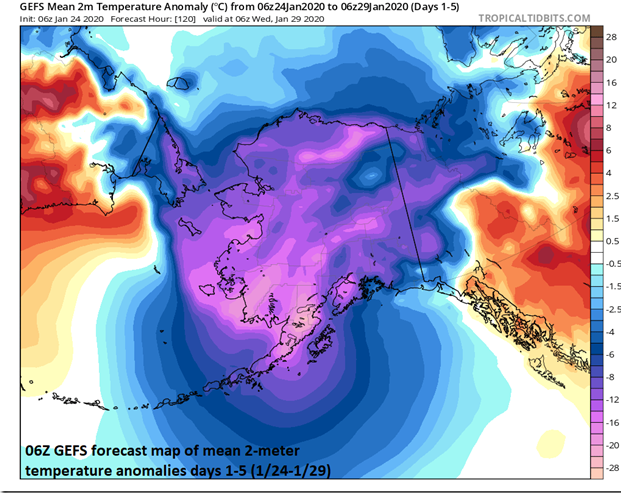Data from the National Oceanic and Atmospheric Administration (NOAA) show that 2023 was the fourth year in a row that Alaska has experienced colder than normal winters. 2023’s cold winter confounded NOAA’s early long range forecast for the season, which said:
The U.S. Winter Outlook 2022-2023 map for temperature shows the greatest chances for warmer-than-average conditions in western Alaska, and the Central Great Basin and Southwest extending through the Southern Plains.
The Old Farmer’s Almanac also missed the forecasts. It predicted a “much milder than normal winter” for 2022-23 with “below average snowfall.”
According to data, historic snowfall totals of more than 8.2 feet (250 cm) fell across much of Alaska, and Anchorage set a new record for leftover snow that stayed on the ground well into April.
April was also a historically cold month across Alaska, with an average temperature of -8.7 degrees Celsius, which is 5.5 degrees Celsius below the multi-decadal norm and the fourth coldest April in 99 years of NOAA records.
Alaska snowfall continued into May, breaking even more records, as seen in this Twitter video.


